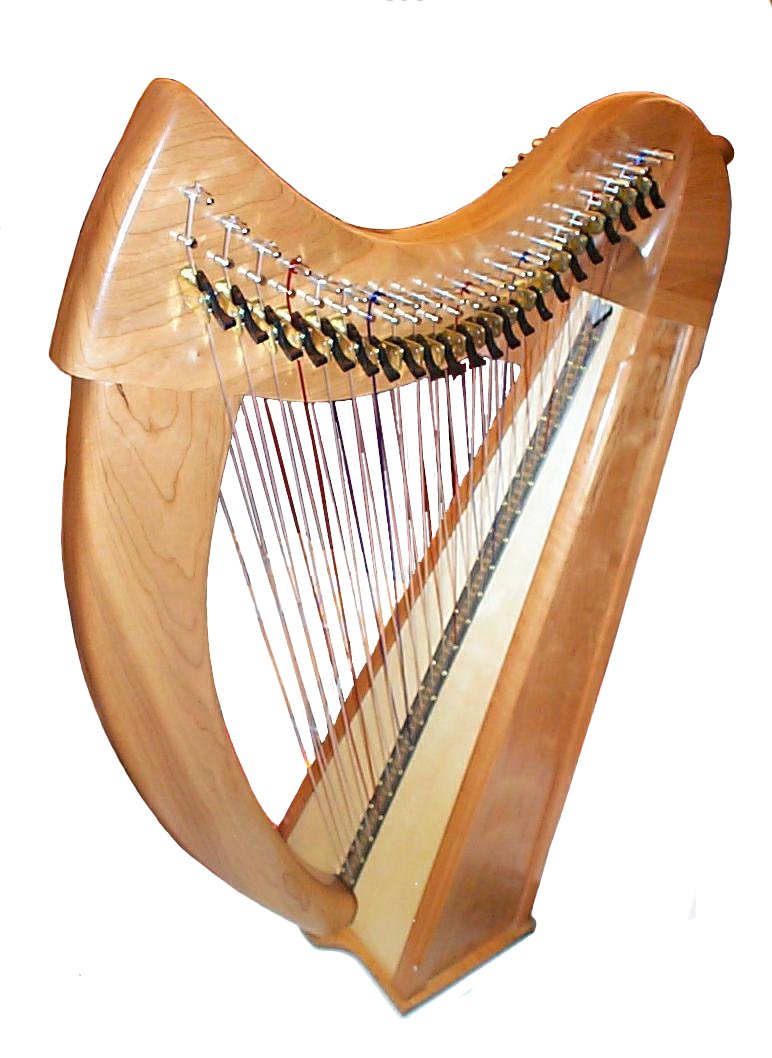Multi-course Harp on:
[Wikipedia]
[Google]
[Amazon]
 A multi-course harp is a
A multi-course harp is a
 Chromatic double and triple harps have one row of strings that is tuned pentatonically to allow for
Chromatic double and triple harps have one row of strings that is tuned pentatonically to allow for
harp
The harp is a stringed musical instrument that has a number of individual strings running at an angle to its soundboard; the strings are plucked with the fingers. Harps can be made and played in various ways, standing or sitting, and in orche ...
with more than one row of strings
String or strings may refer to:
*String (structure), a long flexible structure made from threads twisted together, which is used to tie, bind, or hang other objects
Arts, entertainment, and media Films
* ''Strings'' (1991 film), a Canadian anim ...
. Harps with two rows are called double harps; harps with three rows are called triple harps. A harp with only one row of strings is called a single-course harp.
Diatonic double harps
A diatonic double-strung harp consists of two rows ofdiatonic
Diatonic and chromatic are terms in music theory that are most often used to characterize Scale (music), scales, and are also applied to musical instruments, Interval (music), intervals, Chord (music), chords, Musical note, notes, musical sty ...
strings one on either side of the neck. These strings may run parallel to each other or may converge so the bottom ends of the strings are very close together. Either way, the strings that are next to each other are tuned to the same note. Double-strung harps often have levers either on every string or on the most commonly sharped strings, for example C and F. Having two sets of strings allows the harpist's left and right hands to occupy the same range of notes without having both hands attempt to play the same string at the same time. It also allows for special effects such as repeating a note very quickly without stopping the sound from the previous note.
Diatonic double harps can also be tuned in octaves
In music, an octave ( la, octavus: eighth) or perfect octave (sometimes called the diapason) is the interval between one musical pitch and another with double its frequency. The octave relationship is a natural phenomenon that has been refer ...
to allow for an extended range
Range may refer to:
Geography
* Range (geographic), a chain of hills or mountains; a somewhat linear, complex mountainous or hilly area (cordillera, sierra)
** Mountain range, a group of mountains bordered by lowlands
* Range, a term used to i ...
on small instruments.
Chromatic double and triple harps
 Chromatic double and triple harps have one row of strings that is tuned pentatonically to allow for
Chromatic double and triple harps have one row of strings that is tuned pentatonically to allow for chromatic
Diatonic and chromatic are terms in music theory that are most often used to characterize scales, and are also applied to musical instruments, intervals, chords, notes, musical styles, and kinds of harmony. They are very often used as a pair, ...
playing. These harps exist both as parallel chromatic harps or as cross-strung harps.
Parallel chromatic double and triple harps
These harps have the strings strung in parallel, and are not to be confused with inline chromatic harps.A triple harp features three rows of parallel strings, two outer rows ofdiatonic
Diatonic and chromatic are terms in music theory that are most often used to characterize Scale (music), scales, and are also applied to musical instruments, Interval (music), intervals, Chord (music), chords, Musical note, notes, musical sty ...
strings, and a center row of chromatic
Diatonic and chromatic are terms in music theory that are most often used to characterize scales, and are also applied to musical instruments, intervals, chords, notes, musical styles, and kinds of harmony. They are very often used as a pair, ...
strings. To play a sharp, the harpist reaches in between the strings in either outer row and plucks the center row string. Like the double-strung harp, the two outer rows of strings are tuned the same, but the triple-strung harp has no levers.
This harp originated in Italy in the 16th century as a low headed instrument, and towards the end of 17th century it arrived in Wales
Wales ( cy, Cymru ) is a Countries of the United Kingdom, country that is part of the United Kingdom. It is bordered by England to the Wales–England border, east, the Irish Sea to the north and west, the Celtic Sea to the south west and the ...
where it developed a high head and larger size as the Welsh triple harp. It established itself as part of Welsh tradition and became known as the Welsh harp (''telyn deires'', "three-row harp"). The traditional design has all of the strings strung from the left side of the neck, but modern neck designs have the two outer rows of strings strung from opposite sides of the neck to greatly reduce the tendency for the neck to roll over to the left.
Cross-strung harps
Cross-strung harps have two rows of strings that intersect in the middle.{{Harps Frame harps